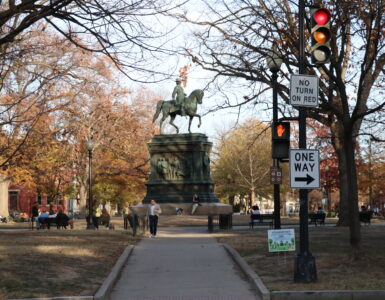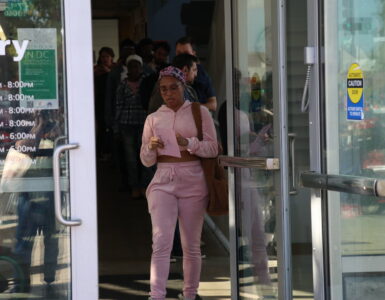Litter in major cities can impact residents in more ways than just being an eyesore, ranging from mental and physical health problems to community safety.

It’s common in large cities to walk down the street and see tiny pieces of trash littered on the sidewalk and road. Cigarette butts, used napkins, and even drink cans are just a few of the numerous types of rubbish found in almost every D.C. area. While these may seem like inconsequential pieces of trash that could be an annoyance at most, people littering in their communities can create major problems for everyone that lives there.
Brad Edelman is the Chairperson of the Beautification Committee for the Logan Circle Community Association (LCCA). Part of his and the Beautification Committee’s goals is to make the neighborhood look nicer by cleaning up the streets. Edelman said he got involved with the committee when he wanted to find a way to help keep his neighborhood clean and found out about the LCCA’s quarterly clean-ups. After joining the group, Edelman and the other members decided to bump the clean-ups to once a month and encourage residents to be involved in helping maintain their community.
“What made me join this group was I saw people arguing on the neighborhood website about trash on the streets,” Edelman said. “Does anybody, instead of complaining about this, want to help clean up the neighborhood?”
The clean-ups have been going on for around four years now, and Edelman said the experience has been both rewarding and sad because of how much trash they’ve picked up during clean-up days. He said they had picked up more than 400 pounds of trash during these monthly events in the last couple of months.
“We clean it up, and then before the end of the week, there’s trash all over the place,” Edelman said.
Another way Edelman and the Committee encourage keeping their neighborhood clean is by spreading awareness. Edelman said a lot of litter occurs when people put loose trash in their garbage cans, making it more susceptible to falling out while a garbage truck is driving on its route. Edelman said that he has noticed that certain streets around Logan Circle that aren’t usually a main walkway have more trash either because the public trash cans that used to be there have been removed or because the areas are more residential and don’t receive street cleanings. Edelman said he wants to encourage people to pick up trash when they see it and get involved because “when people live in a nicer place, they care about it more” and are likelier to work hard at keeping it clean.

Local resident Jake Carson said he’d noticed the litter problem in D.C. but hasn’t been sure what to do about it. He said he would like to see something done so the community can stay clean and healthy. Carson said he is concerned about how litter increases exposure to rats and other pests that can carry diseases and risk people’s health.
“Sadly, litter is a big societal problem that doesn’t get talked about enough,” Carson said.
Terrill Haigler, a community activist in Philadelphia, has first-hand experience and seen the impact that littering has on cities. A former sanitation worker, Haigler said he became an activist after seeing how there weren’t advocates for sanitation workers. One of the biggest challenges to the job was the amount of litter on the ground that could range from being nuisances to safety hazards. Certain neighborhoods in the city had fewer trash cans than others, increasing their amount of litter, and Haigler said he has an assumption as to why that is.
“The assumption is that in more Brown and Black areas of the city, there’s been an intentional disinvestment, and the beautification of those neighborhoods and zip codes,” Haigler said. “So why put trash cans there because they feel like people don’t care anyway.”
But it can come across as residents being uncaring in the eyes of officials in charge of trash can placements and street cleaning routes because studies have proven that residents in areas with litter and lack of cleaning can be mentally impacted by their surroundings. Haigler said that a study by Eugenia South in 2018 demonstrated that people’s care for their neighborhood and mental health increase when their surroundings are taken care of. South’s study looked at 500 vacant lots and the mental health of residents around those lots after a third of them were completely beautified and received a “green makeover,” another third received a trash pickup, and the final third were left untouched. South’s study revealed that “residents’ feelings of depression decreased by 68%” when the lots around them were given a green makeover.

“When you wake up to a clean street and trees and all those kinds of things, it affects you mentally, emotionally, physically,” Haigler said. “You actually release positive endorphins when you live in a clean neighborhood…It has a whole effect on the whole way of life.”















Add comment